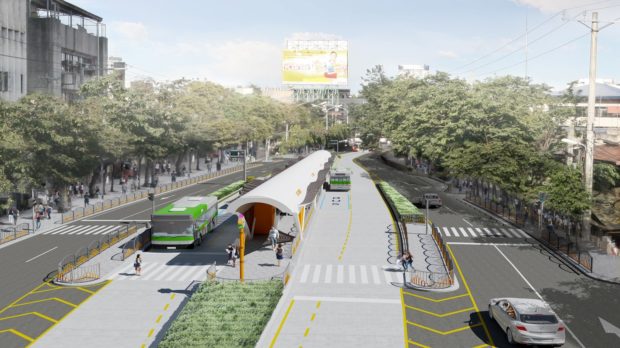CEBU CITY—At least 150 residential and commercial structures in this city are set to be demolished to give way to the road-widening project for the 39.88-kilometer Cebu Bus Rapid Transit (BRT) system, which will be implemented starting next year.
Cebu City Councilor James Cuenco, chair of the committee on transportation, appealed to owners of the affected structures to accept the compensation offer of the government instead of engaging in protracted legal battles that can last for years.
Cuenco said the government had decided to pay for the properties’ fair market value rather than the much lower zonal value.
“I suggest that they agree to sell their affected properties because the government can always expropriate it. They don’t have any choice,” he said in a telephone interview on Friday.

BUS STATION This is the architectural design of one of the stations of the Cebu City Bus Rapid Transit project set to start in Cebu City in 2021. —FACEBOOK
Dedicated lane
Cuenco said there were already several owners who have signified their intention to sell their properties to the government but have yet to be paid by the Department of Public Works and Highways.
Some major streets in the city have to be expanded because a dedicated lane for the buses will be placed at the center of the road, he said.
The BRT line will begin at the corner of F. Vestil Street and the South Road Property (SRP) road in Barangay Mambaling, where the depot of the buses will be located.
From the SRP road, the line will traverse through F. Vestil Street to the Natalio Bacalso Highway in the southern section of the city and heads to Osmeña Boulevard all the way to the Capitol, which are along the main artery of uptown Cebu City, and out into the northern section’s Escario Street, to Gorordo Avenue, proceeding to Salinas Drive.
A few kilometers from Salinas Drive, another depot will be located at the IT Park in Barangay Apas, and then the route will continue on to the northernmost urban village of Talamban.
While the actual BRT route only covers major streets, feeder routes from all over the interior roads will supplement the BRT.

